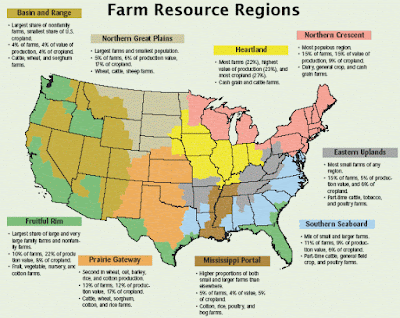This spring farmers have been slow to make decisions on a number of inputs. Reluctance has largely been due to weather concerns and economics. The acreage intentions report last week did not help. Corn and soybean prices immediately decreased.
The USDA-ERS has been collecting cost of production (COP) data since 1975. These costs are based on the actual costs incurred by producers. A base survey is conducted every five years. The an annual Agricultural Resource Management Survey (ARMS) has been used to modify the survey base since 1996. These costs of production excludes costs for marketing and storage. ARMS data collection starts during the fall when production practice and cost data are collected, and finishes in the spring when a follow-up interview collects data about whole-farm costs like overhead, interest, and taxes. New data becomes available every May. Each farm sampled in the ARMS represents a known number of farms with similar attributes so that weighting the data for each farm by the number of farms it represents provides a basis for calculating estimates. The country is divided into 9 regions. Wisconsin is part of the Northern Crescent region. Many of the Corn Belt states are in the Heartland region.

Figure 1. Farm resource regions used to summarize cost of production data.
Figure 2 shows the cost of production (COP) estimates, profit and COP forecasts for corn in the Northern Crescent and Heartland regions of the U.S. Cost of production has steadily increased over the last decade. Growing an acre of corn costs around $650-$700 per acre on average. For farmers in the Northern Crescent profits have only been seen during 2010 to 2013. Farmers in the Heartland have seen a few more profitable years. Even though yields increase, COP increases as well and average profitability was negative in 2014.

Figure 3 itemizes COP for the Northern Crescent and Heartland regions. The categories of seed, fertilizer, equipment and land have increased dramatically since 2005. While the categories of chemicals, labor and overhead have not changed much. Land prices are higher in the Heartland region than the Northern Crescent.
Click here to see more...